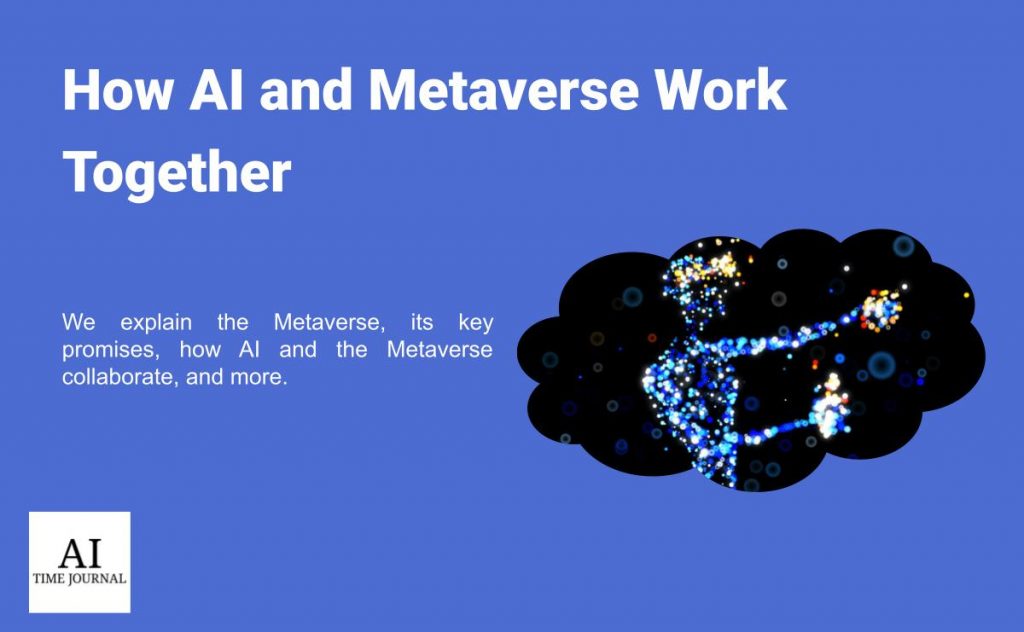
Artificial Intelligence and the metaverse are some of the most prominent technologies of the 21 st century. Each can enhance people’s lives in many ways, improve many industries, and increase the efficiency of many working processes. AI and the metaverse can be applied in such industries as healthcare, gaming, management, marketing, education, and more. Generally, these technologies are looked at separately without considering their influence on each other and their potential for collaboration.
In this article, we talk about how artificial intelligence and the metaverse work together, how they are applied in various industries, and their potential. If you want to learn more about AI and VR, check out these articles: How AI Can Help in Archaeology and Top VR Companies to Watch.
Before we explain the role of AI in the metaverse, we should explain the concept of the metaverse, where and how it is applied, and it’s potential. So, let’s take a closer look at what this term means.
The Metaverse vs. VR
Many people mistake the metaverse and VR for synonyms; however, these concepts do not have much in common. VR, short for Virtual Reality, defines a simulated experience that people get through specific headsets. The situations in the VR world can be similar to the real world, such as meeting with friends, visiting the cinema, playing computer games, and more, or being completely different by immersing people in fictional and fantasy worlds.
On the other hand, the term metaverse is used to describe a hypothetical future representation of the internet that encompasses and is built around virtual reality, virtual worlds, and augmented reality. Currently, the metaverse isn’t really there; however, it will potentially allow people to communicate, buy, sell, play, learn, work, and perform more activities through a centralized virtual experience.
The first record of the concept goes back to 1992 when Neal Stephenson brought the words meta and universe together in his science fiction novel Snowcrash. In the book, the metaverse was described as a reality that people enter with the help of specific goggles and then interact with one another in this virtual space.
To be more specific, in the real world, the metaverse describes a futuristic version of the internet that people will access through their VR headsets, augmented reality, and more common devices like mobile phones and personal computers or laptops. The difference between this concept and the existing web2 is enormous. Even the potential decentralized web3, where information is still accessed through websites and applications and communication happens via social media messengers and services like Zoom, Microsoft Teams, or Discord, is very different from the notion of the metaverse. The metaverse describes an immersive virtual world where users are represented by custom avatars and access information with the help of VR, AR, and other technologies.
Although the metaverse isn’t here yet, some of its pieces exist in various forms. Some companies, such as Epic, for instance, started referring to some of their products as metaverses. For example, the battle royal game Fortnite is often considered a metaverse as the users can interact with the help of virtual avatars and the game displays various events by using VR technology.
The Key Promises of the Metaverse
The concept of the metaverse is based on some promises or functions this technology will be able to provide. These key promises include a decentralized world, identity verification, smart contracts, and ETPs. In one word: blockchain.
Let’s define every goal to understand where AI can support and enhance the metaverse.
The first promise is a decentralized world that the metaverse represents. It is quite similar to the concept of web3, where users control their own data, digital assets, and identity, which are secure and tamperproof thanks to being stored on a distributed ledger. This goal will be the opposite of the existing web2 where few centralized tech companies hold the most power and will empower all users interacting with the internet.
Learn more about web3 in our articles on the Best Web 3.0 Courses (2023) and the Top Crypto and Web3 Companies to Watch in 2023.
The next aim concerns identity verification. In this case, the metaverse implements blockchain technology to verify users’ identities and ensure that only users who passed the authorization can access data. Some of the leaders in the tech industry believe that the metaverse should implement self-sovereign identities (SSI) that are digital identities linked to verification and authorization data used in the real-world (e.g., biometrics) and managed in a decentralized way.
One more promise the concept of the metaverse has is smart contracts. These contracts are used to automate and protect transactions. If we explain this technology more accurately, smart contracts are computer programs or transaction protocols that can automatically record, control or execute actions based on the terms of a signed agreement or contract. Hence, the metaverse is expected to possess this function to ensure that various actions, such as trading, are executed according to the determined agreements.
And last but not least, exchange-traded products (ETPs) are expected to be a part of the metaverse technology. This goal is quite simple to understand: the metaverse’s original cryptocurrency will be used for buying-selling operations and rewarding AI applications for executing tasks.
Now, as we are well aware of the goals the metaverse has to achieve, we can proceed with the collaboration between AI and the metaverse. So, let’s explain how artificial intelligence can bring humanity closer to creating it.
How AI and the Metaverse Collaborate
Chatbots are one of the greatest applications of AI that streamlines many business processes and allows users to solve their problems way faster. Also, this form of communication will be applied in the Metaverse. In addition to their current functions, such as customer service, marketing, sales, and more, chatbots can assist users in the Metaverse by providing them with instructions and information about various products and services, answering their questions, completing transactions on users’ behalf, taking orders, etc. For instance, if a user cannot find a specific good, the chatbot could easily solve this problem by directing the customer to the needed location within the Metaverse.
For more on chatbots, learn more here: “Virtual Moron-Idiot!”: Why Chatbots Fail and the #ChatbotRescue Mission Saving Them and Customer Service 2.0: The Rise of Chatbots and RPA. Also, you can learn more about the best chatbots here: Best AI-Powered Chatbots.
Moreover, artificial intelligence can be utilized to create inclusive interfaces that will make the users’ journeys convenient for everyone, including people with disabilities. Hence, AI can help make the Metaverse a user-friendly and easy-to-use platform. With the help of such technologies as Natural Language Processing (NLP), speech recognition, computer vision, translation, and augmented reality, the users will be able to interact with the Metaverse in their native language and through images and videos and enhance the user-metaverse interactions.
Digital avatars are one more way in which AI can collaborate with the Metaverse. For instance, to provide users with realistic avatars to represent them, AI can help create environments, dialogue, and images by using NLP, virtual reality, and computer vision.
In a nutshell, AI can interact with the Metaverse in various ways, including digital avatars, chatbots, interfaces, and more. However, as the Metaverse is not here yet, artificial intelligence might progress even more until the new version of the Internet is here, which will bring new collaboration opportunities for these technologies.
